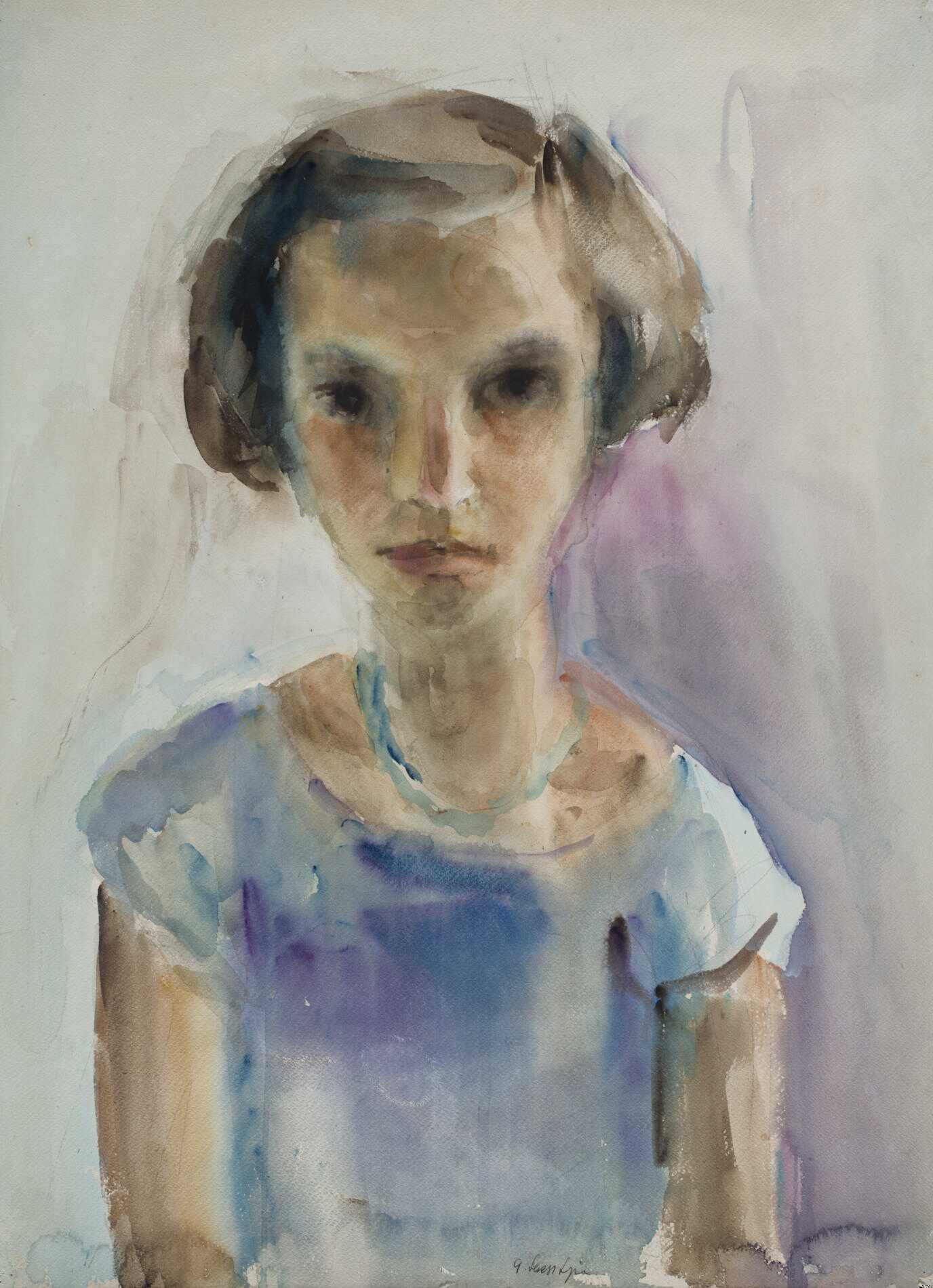The Warsaw Ghetto Uprising started on 19 April 1943 in Warsaw, Poland. It was the act of Jewish resistance in German-occupied Poland during World War II to oppose Nazi Germany's final effort to transport the remaining ghetto population to the Majdanek and Treblinka death camps. The uprising started when the ghetto refused to surrender to the police commander, SS-Brigadeführer Jürgen Stroop, who ordered the burning of the ghetto, block by block. The uprising ended on 16 May. A total of 13,000 Jews died, about half of them burnt alive or suffocated. It was the largest single revolt by Jews during World War II. The Jews knew that the uprising was doomed and their survival was unlikely.
Today we present a work by the Jewish artist, Gela Seksztajn, who died in the Warsaw Ghetto, probably during the uprising. When the war broke out and the ghetto was established, she was engaged along with her husband in the cultural life of the ghetto and in the Jewish Social Self-Help. She worked as a guardian and art teacher in charity kitchens for children and as a teacher in community schools. She organized exhibitions of children's artworks and made costumes and decorations for theatre shows. She painted her daughter, her husband, employees of the school, and children who were coming to the social kitchen. Her only self-portrait was made at that time.
Her works are known now only because of the so-called Ringelblum Archive, a collection of documents from the World War II Warsaw Ghetto that was collected and preserved by a group known by the codename Oyneg Shabbos (in Modern Israeli Hebrew, Oneg Shabbat), led by Jewish historian Dr. Emanuel Ringelblum. The group, which included historians, writers, rabbis, and social workers, was dedicated to chronicling life in the Ghetto during the German occupation. They worked as a team, collecting documents and soliciting testimonies and reports from dozens of volunteers of all ages. The materials submitted included essays, diaries, drawings, wall posters, and other materials describing life in the Ghetto. The collecting work began in September 1940 and ended in January 1943. The Archive was buried in the ground in two milk cans and ten metal boxes and unearthed after the war.
Here you can read an article about Gela written by Anna Majchrowska. We present today's masterpiece thanks to the Jewish Historical Institute in Warsaw, whose collection includes the Ringelblum Archive.
P.S. Here you can read about Erna Rosenstein, a female Jewish artist who managed to escape a ghetto and survive the war.


 Gela Seksztajn
Gela Seksztajn